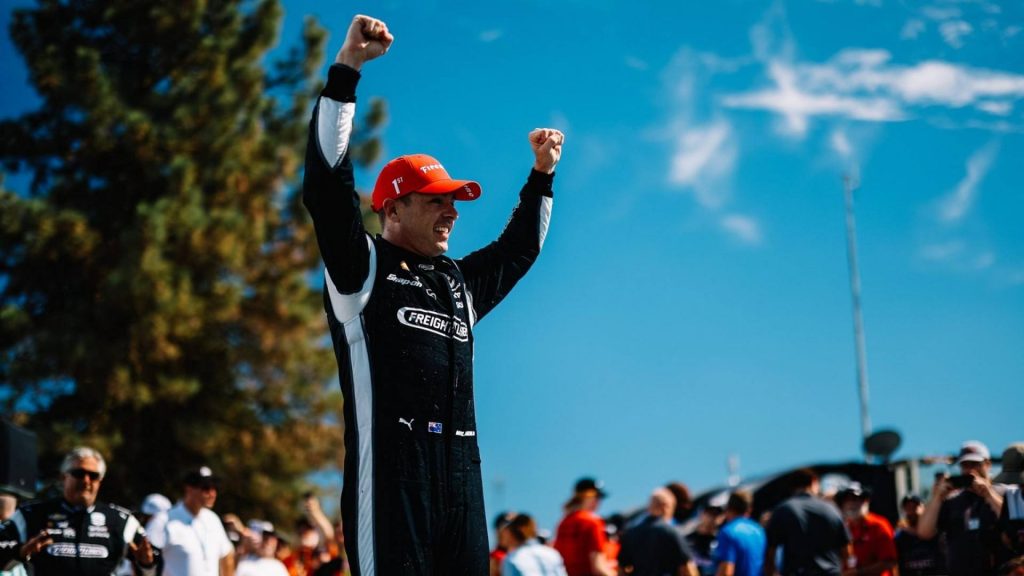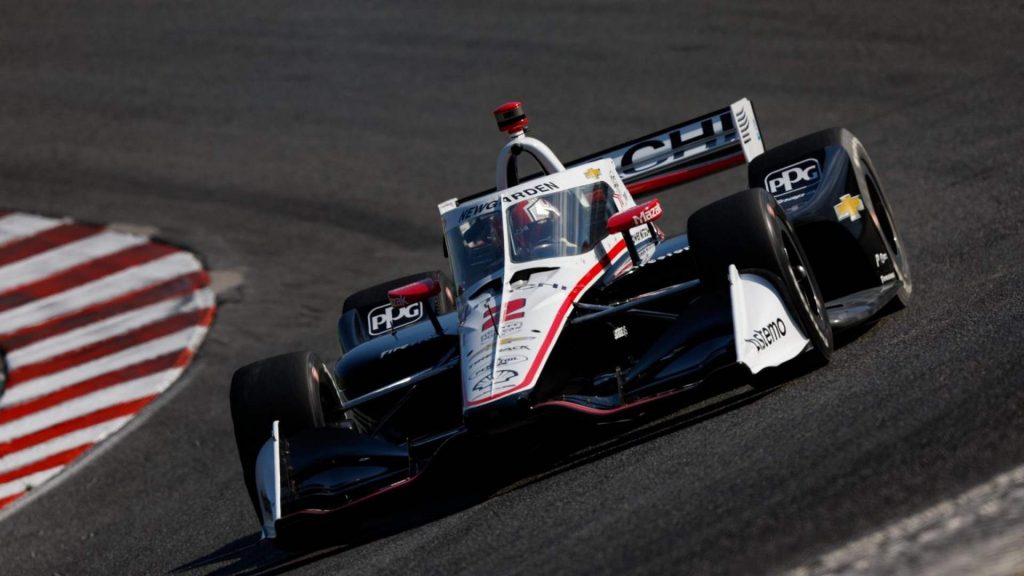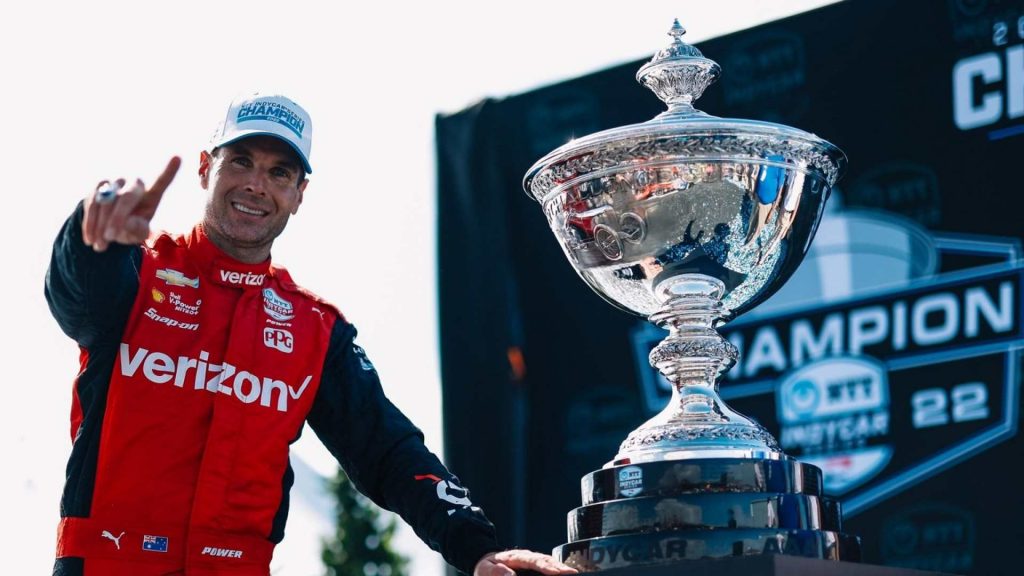In the Sportslumo countdown of the top five IndyCar drivers for the 2022 season, we reveal drivers ranked from fifth all the way to the number one driver of the year.
There was no shortage of intriguing driver stories that unfolded throughout the 2022 season, whether it was the leaders of IndyCar’s youth movement and the impressive rookie class of homegrown and foreign talents, or a pack of resurgent, tenured veterans enjoying continued success or rediscovering their old form once thought lost. In the Sportslumo countdown of the top five IndyCar drivers for the 2022 season, we reveal drivers ranked from fifth all the way to the number one driver of the year.

Romain Grosjean lost out to Scott McLaughlin for Rookie of the Year last year only because Grosjean deliberately withdrew from three races. With the exception of a few oval-track flashes of strength, McLaughlin appeared very ordinary in a high-powered single seater, a far cry from the sensational form he’d left behind in the Australian Supercars Championship after winning the Bathurst 1000 and three straight championships. Although with the aid of the wealth of resources he possesses at Penske, McLaughlin was able to metamorphose into a top-tier IndyCar driver over the off-season. At the season-opening race in St. Petersburg, he turned his first pole position into a sensational victory, defeating the defending champion Palou. At Texas Motor Speedway, he was then one corner away from double up.
At Mid-Ohio, he defeated Palou once more to snap a losing streak, and over the course of the remaining six races of the season, he never finished lower than sixth, earning four podium finishes, another pole in Nashville, and a commanding victory in Portland from the starting line. All this from a driver whose only season of regional Formula Ford racing served as his entire junior formula career prior to entering the IndyCar series. The only thing that prevented him from placing higher than sixth in the standings was a late spring slump that included crashes out of the Indy 500 and spins at the Indianapolis Grand Prix and Detroit. However, the proof of concept is undeniable, and ‘Scotty Mac’ will likely battle and fall his way to more triumphs next season.

Few, if any, young drivers on the IndyCar grid are as electric as the 23-year-old star of the McLaren SP IndyCar team, with his lightning-quick ninja reflexes and blistering speed, when Pato O’Ward has the car under him. O’Ward finished the season in a close seventh position, but not because he had regressed from his third-place championship showing in 2021. He was indeed terribly unlucky not to have equaled or even surpassed that high standard. He drove brilliantly to overtake Rinus VeeKay and snag the victory at Barber Motorsports Park, and Josef Newgarden’s misfortune allowed him to win the Iowa 300 for the second time after placing second the day before.
One could argue that O’Ward could have been more committed to what could have been a sensational around-the-outside overtake into turn one and would have his name and likeness on the Borg-Warner Trophy instead. O’Ward claimed he lacked the horsepower to pass Ericsson on the final lap of the Indianapolis 500. By that point, O’Ward had moved up to second place in the standings, but he then experienced two mechanical breakdowns, the second at Mid-Ohio after starting first and taking the lead in the opening lap. At Portland, he was declared out of the running for the championship, but the symbolic demise of his title chances came when he was caught up in a pileup to end the race in Nashville.
And there was unintended conflict across it all. There were rumours that O’Ward was unhappy at McLaren. After winning at Barber, he was given a new three-year contract, but as the Palou pre-contract drama played out around him, some people began to wonder if O’Ward was having second thoughts about staying. O’Ward is anticipated to be back in the lead of the Astor Cup race in 2023 as a member of a three-car team.

The favourite son of Hendersonville, Tennessee, came in second in the IndyCar Series standings for the third consecutive year. At Laguna Seca, where overtaking is difficult, he overcame a mistake in qualifying to surge from 25th to second. It was typified by Newgarden. Since Simon Pagenaud’s five victories in the course of his 2016 championship season, his five victories in 2022 were the most in a single season. He won consecutively in Texas and Long Beach before collecting a sponsor’s $1 million incentive by triumphing at Road America. A season of highs and lows culminated with a doubleheader at Iowa Speedway: He dominated the field in the 250-lap race on Saturday and was ready to do the same in the 300-lap race the next day when his suspension failed, throwing him into the wall and knocking him out of the race. He later collapsed outside his motor home and was taken to the hospital.
In Portland, he was just three points behind Will Power after holding off a charging David Malukas for his seventh victory at Gateway. However, he chose to run one too many stints on the primary tyres, which caused him to fall to eighth place when at least a top-five result was expected. In eleven years, Newgarden became the only driver to finish first in more than five races while still finishing second in the series standings. However, it would be difficult to place a wager against him in 2023 winning his third series championship. On his 12th attempt, he will also be vying for the elusive first Indy 500 victory.

This season, “The Iceman” was only one of a few of legitimate title contenders, but he was maximising the chances that were presented to him. Dixon won in Toronto’s streets after eight top-ten finishes in the first nine races and a podium finish in Detroit. Some are still perplexed as to how Dixon, who was involved in a multi-car collision halfway through another chaotic race in Nashville, managed to avoid serious injury and go on to defeat Scott McLaughlin in a photo finish for his second victory of the year. At Laguna Seca, where he simply lacked the speed all weekend to challenge for the win, he came in outside the top 10 just twice all season. But if not for a little, expensive mistake at the Indianapolis 500, he wouldn’t be in a vulnerable position going into the decider.
The previous record for the quickest official pole position run was broken by Dixon after 26 years. Not just that day, but during the course of the competition, he led more laps than any other driver. He then exceeded the pit entry speed limit by one mile per hour, which led to a drive-through penalty, a 21st-place finish, another missed opportunity to win a second Indy 500, and ultimately a missed chance to capture a record-tying seventh national championship. Dixon ought to be prepared to compete for victories and a championship even as his Hall of Fame-caliber career comes to a close. But if 2023 proves to be the start of the fall, we might look back on 2022 as the year that Dixon lost his best and brightest sensational record because of one mile per hour.
Read More- Which of the four lost F1 drivers from 2022 will eventually make a comeback?

The ceiling for Will Power going forward into 2022 was unambiguous. He was past the age of 40 and probably on his last full-time IndyCar contract. He hadn’t been a serious championship contender in a few years. He might pick up one or two wins here and there, but nothing more. Power has always been one of the most aggressive and unyielding racers in IndyCar, but during the off-season he changed his outlook. While he would still give it his all every weekend, he wouldn’t be worried by the things he couldn’t control. Instead, he would be satisfied to get points and have great finishes on days when winning wasn’t likely. Cynical people might view “Will Power: Master of Zen” as little more than a flimsy façade that would crumble before the first obstacle turned him into a miserable complainer. That new attitude may have crumbled at the post-race scrap with Devlin DeFrancesco at Road America after the rookie kicked Power out of contention, but there was no sign of it.
When he outlasted Rossi to win the most recent Detroit Grand Prix in Belle Isle from grid position 16, it was his only close victory this year. Even if you flipped a coin and got heads or tails, you’d have a better chance of Will Power finishing in the top three than any other driver thanks to his nine podium finishes. He won five pole positions, breaking Mario Andretti’s previous mark for the most in the illustrious history of American open-wheel racing. Mid-Ohio, in my opinion, was the event that epitomised the “new” Will Power. Power, who had a poor start in 21st, spun around after making contact with Takuma Sato on the first lap and fell to the back of the pack. On the same day that Andretti experienced internal conflict, Power remained calm, took advantage of a three-stop strategy, and fought back to place third. Despite finishing poorly at the Indianapolis 500, he managed to win his second IndyCar Series championship, something that many people thought would never happen.